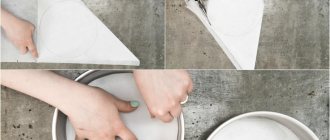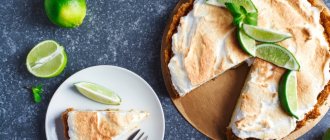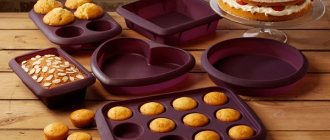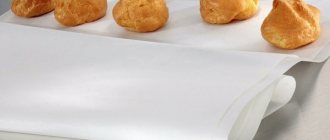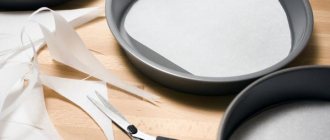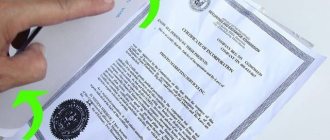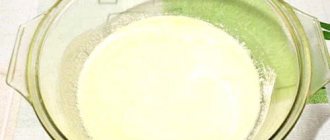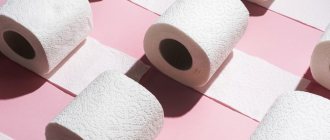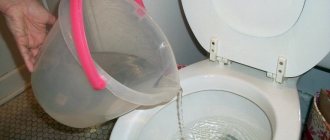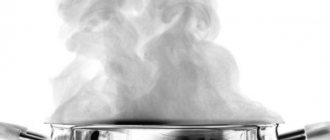3 types How to use: 7 rules Not only baking: 4 more ways to use What can be replaced
Once upon a time, our ancestors, in order to protect bread from soot, wrapped it in a fig leaf. The ancient Egyptians already used the equivalent of parchment. And our grandmothers and mothers used tracing paper. Today there is a special parchment paper that does not allow baked goods, fish or meat to burn, and leaves the baking sheet or baking dish clean.
How to replace parchment paper for baking?
How to replace parchment paper when baking:
- drawing tracing paper coated on both sides with vegetable oil;
- ordinary office paper (clean), also oiled;
- food parchment (thick paper from which baking bags in supermarkets are made).
Interesting materials:
Is it possible to convert mp4 to AVI? Is it possible to feed a cat dry food and meat? Is it possible to feed birds cookies? Is it possible to feed a puppy milk? Is it possible to feed a dog dry food and Natural food? Can acoustic foam be painted? Is it possible to paint a gas cylinder? Can you dye your hair again? Is it possible to dye your hair dark after bleaching it? Is it possible to swim in the Kuban Reservoir?
What does it look like
The areas of application of parchment are very wide, for example, in the furniture, clothing, fast food, household, and medicine industries. In appearance, this material is thin and transparent, depending on the scope of application it is divided into the following types:
| Parchment brand name | Where is it used? | Additional characteristic |
| "A B C". | Food packaging. | Fatty foods. |
| "D". | Production of multilayer packaging. When filtering, laminating. | Withstands temperatures of 230 °C. |
| "M". | For packaging of medications. | You can pack dressings. |
| “N”, “NZh”, “N-bio”. | Food storage up to 30 days. | Packaging material for long-term storage of products. |
| "VP". | For packaging low-fat products. | Printed images can be easily applied to paper; it can be laminated, metallized, or laminated. |
| "VP-M." | Packaging of household chemicals. | Can be used for packaging cosmetics. |
Easter recipes for your piggy bank
You won’t be satisfied with theoretical reasoning alone, and you won’t get fragrant baked goods using them either. Let's arrange a culinary workshop on the topic “how to bake Easter cakes in paper forms”!
You will need:
- 700-900 g flour;
- 300 ml milk;
- 3 eggs;
- 250 g sugar 70-80 g for glaze;
- 150 g butter;
- 30 g of fresh yeast (also called “live”);
- 150 g raisins;
- 0.5 tsp. lemon juice;
- 1 tsp. cinnamon;
- 200 g powdered sugar;
- small beets;
- a pinch of salt.
Housewives start baking Easter delicacies on Maundy Thursday
Preparation.
1. Crumble the yeast and pour into 100 ml of warm, but not hot milk.
2. Add 50 g of sugar.
3. In another bowl, pour the remaining milk over 200 g of sifted flour. Try to prevent lumps from forming!
4. Gently combine both mixtures and stir until smooth (this is easiest to do with a flat wooden spatula).
5. Cover the bowl with cling film, insulate it with a thick towel and leave it alone until the dough has risen to twice its original volume. Important! From the minute the yeast gets into the milk until the cake goes into the oven, you need to carefully protect it from drafts.
6. Melt the butter and cool slightly.
7. Pour boiling water over the raisins, let stand for 20-30 minutes, drain and dry with a paper towel.
If you use candied fruits, fill them with water at room temperature.
8. Separate the yolks from the whites. For now, put the whites in the refrigerator, and beat the yolks with 200 g of sugar and, without stopping whisking, pour the butter into them in a thin stream.
9. Add the beaten yolks to the suitable dough.
10. Sift about half of the remaining flour in a heap to give the baked goods airiness, make a depression in the center and pour the dough with the yolks into it.
11. Send swollen and dried raisins here along with cinnamon.
12. Start kneading the dough, gradually adding the last portions of flour as needed. Its exact quantity will have to be determined “by eye”: the future cake should not blur under your fingers or stick to the knife when you try to cut it, but at the same time it must retain its elasticity and delicate texture. Otherwise, the baked goods will be too heavy.
13. Finally, cover the bowl with the dough with cling film, wrap it in a thick towel and leave in a warm place for another 60 minutes.
14. It's time to take on the forms! Fill them with the appropriate dough to 13-12 heights and... let them stand for another 1 hour. Yes, making real Easter cake is a long process.
15. Place the molds in an oven preheated to 180 degrees for 40-50 minutes. It is advisable not to open the door again at this time, so that the capricious baked goods do not “deflate” due to temperature changes.
Let the finished baked goods sit in the oven for another quarter of an hour.
16. Beat the whites with sugar and lemon juice. And if you want your glaze to acquire a pleasant pinkish or red tint, add 1-2 tsp to it. freshly squeezed beet juice.
17. Grease the finished and completely cooled Easter cakes with glaze and sprinkle with colored sugar.
If you are using silicone, metal, or homemade foil pans, pour some water onto the pan before baking. The steam into which it will turn will prevent the bottom from burning and the top from cracking due to the fact that the crust has already “set”, but the inside still continues to bake and expand.
Peculiarities
Baking parchment is needed to maintain the shape of the baked dish by reducing the sticking of the product to the baking sheet. Moreover, this option is relevant not only when creating hot baked goods, but also for cold sweet products, for example, cheesecakes and tiramisu. The use of baking paper significantly reduces labor costs for washing dishes and embossed shapes, so it can be purchased in stores not only in the form of flat leaves, but also as a mold for cupcakes and muffins.
Baking paper is truly indispensable when packaging prepared food, as well as medicines and any sterile items. This will prevent spoilage, contamination and drying out of food. Baking paper has long been adopted by catering enterprises, in particular, take-out restaurants.
Thanks to its exceptional water and grease resistance, baking paper allows you to keep your prepared dish hot for as long as possible. By rolling the dough between several layers of paper, you can get ultra-thin cakes. They are transferred to the oven directly on a piece of paper, thereby eliminating the risk of breaking them along the way.
Baking paper can be used to make very good food corners for cream, condensed milk, as well as melted chocolate - by rolling them up like a bag, you can quickly and easily decorate homemade baked goods with decorative roses, curls, or make an interesting inscription.
Paper is often used to make stencils for confectionery decorations - to do this, you just need to place the sheet on the pattern you like, trace it with a pencil and cut it out, then transfer the template to a cake or pie and sprinkle with grated chocolate, cocoa or sweet powder. Some housewives use multi-colored coconut flakes.
If you don’t have microwave-safe dishes, you can heat the dish directly on baking paper - in this case, all its taste properties are fully preserved.
Food grade unbleached parchment
This is a higher quality thin paper that is popular for storing food and preparing pies and other hot dishes. The basis for its production is high-fat cellulose, therefore the products are characterized by exceptional environmental friendliness and safety for humans. However, it should be borne in mind that unbleached parchment retains only fat and allows moisture to pass through - this significantly limits the scope of its use.
In addition, the recommended heating temperature when using this material should not exceed 170 degrees.
Food grade parchment
This is classic baking paper - quite durable and smooth to the touch. As a rule, it is made in brown color. The basis for parchment is a porous filter base, treated with 50% sulfuric acid and forced dried. This production method gives the paper increased water and grease resistance, and these properties remain unchanged when heated to 230 degrees.
This material is biologically inert, it allows air to pass through, thanks to which the product is able to “breathe” without absorbing any extra odors. The strength coefficient of traditional food parchment is twice as high as the corresponding parameter for conventional baking paper, which makes it possible to use the product for packaging products such as margarine, butter, spreads, sweet cheeses and dessert curd masses.
Siliconized parchment
This is one of the most popular types of baking paper these days. Such parchment easily lags behind finished products of all types, and does not require grease. The heat resistance coefficient significantly exceeds the parameters of all other types of baking paper and can withstand prolonged heating up to 300 degrees. It is important that such paper can be used many times.
Parchment with a siliconized coating allows you to transfer layers of puff pastry before freezing, as well as store sliced cheese and sausage - in this case, the product remains fresh longer than during normal storage.
Special silicone paper is considered a separate type of silicone-coated paper - it has a denser coating, which means it can be used more times.
Office and writing paper - a compromise option
In extreme cases, if the above-mentioned substitutes for parchment paper are not found, use ordinary office paper, well soaked in oil. In addition to it, you can also use writing paper, although it is less common today than office paper. Printer paper is thicker than writing paper and is less likely to catch fire in the oven.
This solution is suitable for students and office workers; they always have such paper at hand. However, many professionals believe that such a replacement is unsuccessful. The product sticks to such paper and may become deformed, lose its shape, or burn.
For several years now, many housewives have been using paper baking dishes that have appeared on sale. They make finished products more elegant and can replace traditional baking paper.
Types of parchment, their advantages and disadvantages
Housewives and confectioners use 4 types of materials as parchment for baking. Each of them has advantages and disadvantages:
Drawing tracing paper. Its main advantage is its low cost. It is suitable for baking shortbread and yeast dough and making cheesecakes.
The imperfection of tracing paper lies in its small thickness and fragility. Before baking, the material must be generously greased, otherwise it will stick to the products. Due to its tendency to become soggy, it is not used for making pies with juicy fillings.
Food-grade parchment. Made from environmentally friendly fatty ground cellulose. The paper is safe for health and does not allow grease to pass through.
Disadvantages: moisture permeable, designed for 170°C.
Food parchment. Its production is based on impregnating paper sheets with a 50% sulfuric acid solution. Less commonly, wax or paraffin is used for this purpose.
Advantages: durable, breathable, fat- and moisture-resistant material withstands up to 230°C. It is used to make baked goods from fatty dough, and after additional greasing, from low-fat dough.
Disadvantages: not sold in all stores.
Silicone paper. Its peculiarity is its increased heat resistance - up to 280-300°C. High temperature exposure does not lead to the formation of smoke or fire. But material impregnated with silicone may take on a dark brown tint.
By choosing silicone paper, you will forget about the problem of additional greasing of the mold or baking sheet. Products bake more evenly on it and do not stick. Suitable for baking bread and all types of dough, except biscuit.
HELP: Reusable sheets are available for sale. They differ from rolled silicone paper in their greater thickness.
3 Best Ways to Baking on Parchment
They bake on parchment in many ways, including original ones - each housewife has her own recipe. The most common 3 options:
- cut a square out of paper, place it on a baking sheet, place future pies (pie, pizza, etc.) in the center, place in a preheated oven. To prevent the products from drying out, pin the corners of the square with skewers.
- Place the cookie dough on a rectangular sheet of parchment. After baking, the treat can be decorated with poppy seeds, sugar or cinnamon without fear of staining the table and kitchen floors.
- first make two circles out of the material and place the product on one of them. Cover with the second piece on top and fasten them together by pinching. You can serve baked goods on the table in such improvised bags.
Material advantages
Baking paper is an environmentally friendly natural material. Its capabilities are not limited to use only in baking - it is suitable for freezing food and preparing cold confectionery dishes (here the material performs the function of preserving the shape of the product).
In baking, parchment is used repeatedly (at least 5 times), and this is an undoubted economic benefit. Baking paper is available in several types - they differ in the raw materials used in production and quality.
To lubricate or not
Despite the popularity of baking paper in modern cooking, not everyone knows whether it needs to be greased with vegetable oil before putting it in the oven. The answer to this question can be found on the packaging of the parchment. Some manufacturers treat sheets of paper with silicone, indicating this fact in the product characteristics. In this case, no additional manipulations are required. The baked goods are placed on parchment and sent to the oven.
If there is no impregnation marking on the package, the sheet can be coated with butter or vegetable oil. However, if you are planning to bake shortcrust pastry, you should not do this. The fat released from the product as the temperature rises will ensure the processing of the parchment.
Cod with white beans and bacon
- Cod - 2 fillets;
- white beans in their own juice (canned) - 2 cans;
- smoked-boiled bacon - 4-5 slices;
- cherry - 6 pcs.;
- onion (small onion) - 1 pc.;
- garlic - 2-3 cloves;
- dry white wine - 2 tbsp. l.;
- lemon - 0.5 pcs.;
- salt, pepper - to taste;
- red pepper flakes - to taste;
- dill - for serving.
Finely chop the bacon, fry in a dry frying pan until golden brown, add finely chopped onion and grated garlic to it. Fry until the onion is soft. Add the strained beans to the pan, fry for a couple of minutes, stirring, turn off the heat. Salt and pepper the beans to taste, add red pepper flakes and mix. Season the cod fillet with salt and pepper.
Place half the beans in the middle of the parchment and place the fish fillet on top. Sprinkle everything with 1 tbsp. l. white wine, put cherry tomatoes around the edges of the fish, and 3 thinly sliced lemon slices on the fish itself. Roll and seal the parchment tightly. Do the same with the remaining ingredients. Place both filled bags in a preheated oven at 180°C and bake for 20-25 minutes.
What is it for?
Main applications:
- Paper for baking in the oven can be represented by different materials, for example, thin tracing paper. It is considered fragile; it not only sticks to the biscuit, but also quickly becomes saturated with moisture. If a dish is cooked in the oven for several hours, the tracing paper may crumble or become brittle. Before using this paper in cooking, it is pre-greased.
- Smooth, all-purpose baking parchment has a thin silicone coating so it won't stick to your food. Such sheets do not need to be lubricated; they do not allow moisture and grease to pass through. They can be used repeatedly and can withstand high temperatures.
- Durable, thick brown baking paper is used for baking dishes made from any type of dough. It absorbs fat well, but if the baked goods are low-fat, then the parchment is pre-greased with oil.
- Silicone parchment paper has a double coating, which is why the price is higher than its cheap counterparts. The expensive material has a three-dimensional baking structure, plus a special air layer. It appears brown in color, but is sold in the form of sheets.
To lubricate or not
Despite the popularity of baking paper in modern cooking, not everyone knows whether it needs to be greased with vegetable oil before putting it in the oven. The answer to this question can be found on the packaging of the parchment. Some manufacturers treat sheets of paper with silicone, indicating this fact in the product characteristics. In this case, no additional manipulations are required. The baked goods are placed on parchment and sent to the oven.
If there is no impregnation marking on the package, the sheet can be coated with butter or vegetable oil. However, if you are planning to bake shortcrust pastry, you should not do this. The fat released from the product as the temperature rises will ensure the processing of the parchment.
Cake layers
Parchment paper is very convenient to use when baking cake layers for various cakes. They often come in a wide variety of shapes and thicknesses. It happens that when baking a thick cake, the top quickly browns and begins to burn. The cake itself remains raw. In this case, a sheet of parchment paper is oiled and the surface of the dough is covered with it.
Using parchment for baking cakes, like any other product, is very simple. It is enough to adjust a sheet of paper to the size of the mold using a knife or scissors, grease it with vegetable oil if necessary and lay out the dough. It happens that after cooking, the parchment is firmly fried to the cake. To separate it, there are several ways:
- wipe the slightly cooled paper with a damp cloth to soak it;
- you can cut the leaf with a knife with a long, thin blade;
- Place the mold with the hot cake on a damp cloth and hold for 10-15 minutes.
Adviсe
- Pay attention to the material for making paper: there is disposable, and there is reusable. This should be taken into account when preparing.
- If, according to its characteristics, the product is intended exclusively for baking (this is indicated on the package), then do not bake meat or fish in it.
- If you bought reusable paper, then do not bake meat and cookies on one sheet; it is better to use two different sheets.
Instead of baking paper, you can use parchment, plain paper, greased with oil, foil, or a special baking mat.
Reviews
I always bake with baking paper. I especially liked the Polish “Paklan” - white, smooth, with silicone coating. I use each sheet several times, for example, when I make several batches of cookies or pies. Nothing sticks to Paklan even without fat and flour.
Whether the paper sticks or not depends on its quality. If it is from an unknown manufacturer and is brown, I always grease it with oil and sprinkle it with flour.
I only buy white paper, it never fails, but brown always does. The manufacturer doesn't really matter. To make the dough rise, I sprinkle the greased surface with semolina.
Baking paper is a convenient and useful household item. Thanks to its versatility, it can still compete with high-tech inventions such as silicone and Teflon mats. Choosing the right paper will ensure good results when working with baked goods.
Master class on making a product using the parchment technique
The master class on making postcards that we offer will allow you to understand the principle of the master’s work using the parchment craft technique. So, what steps need to be taken in parchment:
- Prepare tools and template.
- Using masking tape, adhere the parchment to the drawing. Please note that the transfer will go to the wrong side of the tracing paper, so it should be attached correctly from the beginning.
- Place the tracing paper with the design on the embossing mat (or mouse pad, if you don’t have a special one).
- Using a pen whose core does not write, transfer the drawing onto tracing paper. You need to press with such force that a white mark remains on the parchment, but there are no breaks.
- Place the tracing paper face down on the embossing mat. Use ballpoint tools to trace the design.
- Use a larger diameter ball to whiten the pattern, adjusting the degree of pressure. As you work, you should turn the tracing paper over and check how the drawing looks from the front side. The entire drawing must be drawn and whitened.
- After complete tracing, begin perforating. Place parchment with the design outlined on the front side on the perforation mat. Take the needles and start piercing the pattern. Insert the needles vertically into the tracing paper so that the holes are the same size.
- Using thin and sharp scissors, cut out the pierced section of the design to create the illusion of lace. Remove the cut out tracing paper.
- To color the work, you need to lay the parchment face down on the mat and use colored pencils to color the desired areas. If the colors are not bright enough, you can additionally paint the design on the front side.
- Select cardboard according to the tone and cut out a blank for the postcard. Fold the workpiece in half.
- Cut out the required strips of double-sided tape and attach it to the wrong side of the parchment.
- Glue the parchment paper to the cardboard base. Additionally, using a thin brush or toothpick, apply transparent glue to those places that will not be noticeable when gluing.
- Press and wait for the glue and paper to interact.
- Wait for the glue to dry completely.
Using the parchment craft technique, you can decorate many products: vases, flower pots, albums, books, bookmarks, and make decorations for clothes, bags and furniture.
Delicate and subtle, the parchment technique requires perseverance, accuracy and attention from the master.
Tracing paper
One of the available materials that can replace parchment sheets is tracing paper. This is a thin transparent paper used for creating drawings and patterns. It can be purchased at office departments.
This paper is great for baking high-fat baked goods: yeast buns and pies, shortbread, cheesecakes and tiramisu. Tracing paper is used in a similar way to parchment paper. The difference is that before the baking process, the tracing paper must be well greased with butter or fat on both sides.
The disadvantage of this substitute is that it is less resistant to high temperatures, so when exposed to over +200 °C, the paper darkens and collapses. Sometimes the tracing paper sticks to the baked goods and is difficult to remove without touching the edges of the product.
Curious facts
- Parchment paper has a thin layer of wax, thanks to which it burns well and for a long time, so this paper can be safely used to light a fire or barbecue.
- Parchment paper is also good for rolling out dough - it does not stick to the glossy layer of paper, and after working with flour and dough on paper, you do not need to wash the surface.
- Today, the variety of parchment paper is great. One of the best developments is silicone-coated parchment. This paper is even more heat-resistant, moisture-resistant and made from environmentally friendly materials.
Homemade pie
Many people are often faced with the question of how to use parchment to bake a cake. The principle of operation of popular paper is the same as for any other confectionery products. Usually, instructions for use can be found directly on the parchment packaging.
Read also: Which hobby suits you - test
The emergence of various household appliances has made it easier for many housewives to work in the kitchen. The multicooker has become a truly indispensable device. With its help it is very easy to prepare a wide variety of dishes, and some even bake homemade pies in it. Even then, you can use parchment paper. This will prevent the baked goods from burning, and it will be much easier to clean the pan later.
